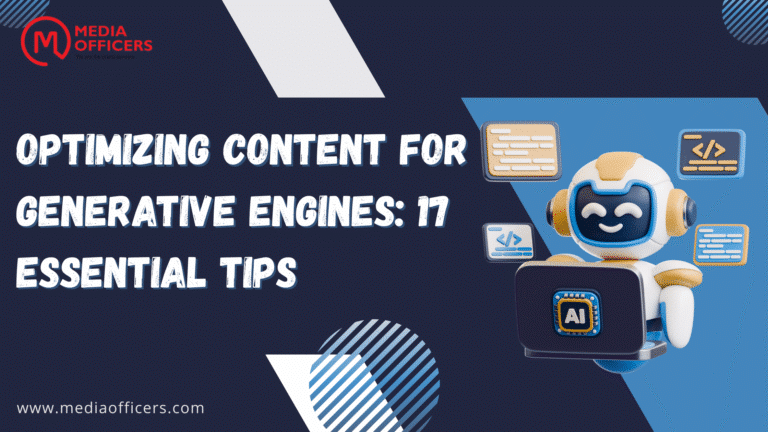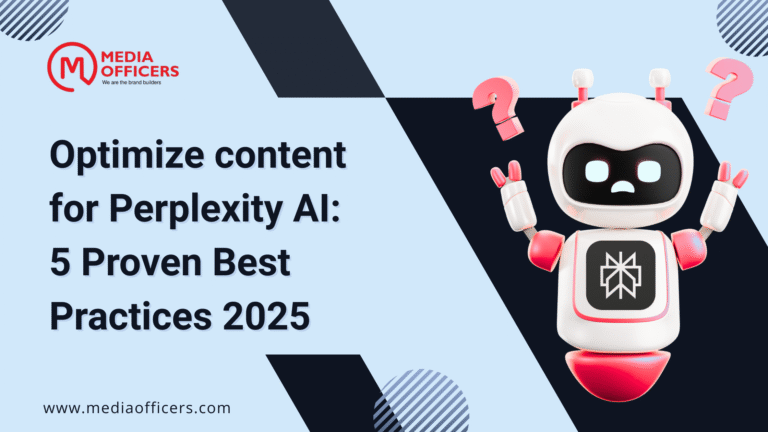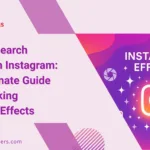Consumers don’t trust the first search result. This is more than a momentary trend it’s reshaping how people research products online. A recent Yext survey shows that trust in the initial answer remains fractured across discovery channels, even as AI powered tools rise in usage and traditional search stays central for many topics.
To succeed in this new landscape, brands must understand where trust breaks down and how buyers combine AI, social proof, and traditional search to decide what to buy. The findings reveal a dynamic where discovery is highly fragmented, and the path to conversion often travels through multiple platforms before a purchase is made.
Understanding the distrust: why the first result isn’t enough
With Consumers don’t trust the first search result, it becomes clear that the first answer rarely closes the loop. People are increasingly cross-checking information, comparing sources, and looking for more context before taking action. The Yext data show that only a minority of users place full confidence in the initial result, which means brands must earn trust across touchpoints rather than rely on a single entry point.
Trust in a single result is often undermined by the complexity of modern discovery. The survey indicates that discovery is fragmented across traditional search, AI tools, and social or review platforms. When information is scattered or inconsistent, buyers naturally seek corroboration, which opens opportunities for brands that provide reliable, machine-ready data and transparent guidance.
AI vs traditional search: what the numbers tell us

The rise of AI powered search tools has shifted how consumers gather information. Yet the data also show that consumers still rely on traditional search for sensitive topics and everyday decisions. According to the survey, only a modest share starts their research with AI, while traditional search remains the starting point for many questions that matter most.
- Only 11% of US consumers say they trust the first tool they use when searching online, underscoring the gap between discovery and trust.
- Nearly 9 in 10 Americans double-check or expand their search because they don’t trust the first answer.
- Traditional search still leads product research for 45% of consumers, underscoring its enduring role.
- AI tools are on the rise, with 15% of respondents using them as a primary tool and 73% saying they’ve used AI powered search more in the past year.
- Daily use of AI tools sits around 45%, highlighting how integral AI has become in everyday discovery.
Across topics, AI is strong for exploration but less decisive for the decision moment. When it comes to buying, shoppers gravitate back to familiar levers like price, peer reviews, and product specs. The data indicate that while 54% use AI for research, 48% use it for creative ideas and 43% for analysis. In short, AI helps buyers explore, but humans still steer purchases with trusted signals.
Where discovery happens: social, reviews, and local insights
Discovery is increasingly social and review-driven. The survey shows that social media remains a potent channel for research and validation. More than half of respondents use social platforms to find reviews, local recommendations, or how-to guidance. This means brands must actively participate in social conversations and cultivate authentic, shareable proof of value.
- 52% use social media to find reviews, making reputation management essential.
- 48% rely on social for local recommendations, underscoring the importance of local optimization and community signals.
- 47% look to social channels for how-to information, which highlights the power of practical content and tutorials.
Reviews and social proof are not merely add-ons; they are core discovery signals. When buyers see consistent, credible feedback across platforms, the probability of trusting the first result increases, but only if that information aligns with other sources. This is why brands should unify messaging and ensure that every channel presents consistent, high quality data.
AI vs purchase drivers: exploration versus decision leverage
AI excels at helping consumers explore possibilities, uncover connections, and spark ideas. The data show 54% use AI for research, 48% for creative ideas, and 43% for analysis. However, for actual purchases, consumers revert to classic drivers like price, peer validation, and precise product specs. Consumers don’t trust the first search result less often when foundational information is clear and verifiable, and more often when buyers can quickly compare options with reliable signals provided by brands.
From a strategy perspective, this means AI should be viewed as a companion to human judgment, not a replacement. AI can surface relevant, structured data and generate helpful summaries, but the final purchase decision still rests on transparent pricing, verified reviews, and robust product information. Brands that train AI-assisted experiences with accurate data and consistent messaging will outperform those that treat AI as a black box.
The six search personas shaping modern discovery
Yext identifies six consumer archetypes that define how people discover products today. Understanding these personas helps brands tailor content and experiences so that the right signals appear at the right moments. The six personas are:
- The Traditionalist (24%): Trusts established search engines for reliable, structured answers.
- The Price Shopper (21%): Prioritizes deals, efficiency, and clear value propositions.
- The Explorer (18%): Uses AI to dive deep into new ideas and connections.
- The Creator (15%): Relies on AI for brainstorming and creative input, especially among Gen Z.
- The Social Proof Seeker (14%): Needs validation from reviews or influencers before acting.
- The Accidental Searcher (8%): Discovers products through casual social browsing and serendipity.
Each persona represents a distinct pathway to discovery. Brands that map these pathways to content and data can improve visibility in the moments when buyers decide where to look next. When consumers don’t trust the first search result, catering to multiple personas helps ensure that credible signals are present across channels, from search engines to social feeds and review sites.
What this means for brands: practical strategies to win trust
In a world where consumers don’t trust the first search result, brands must earn trust through transparent, structured, and consistently accurate data. Here are practical steps to strengthen discovery and conversion:
- Structure data for machine readability: Invest in clean, structured data that search and AI systems can easily parse. This means consistent product attributes, pricing, availability, and descriptive content.
- Unify content across channels: Ensure that product specs, images, reviews, and policies align on your website, marketplaces, and social profiles to avoid mixed signals that erode trust.
- Prioritize reviews and social proof: Proactively collect and respond to reviews, showcase user-generated content, and highlight credible influencers or expert endorsements.
- Enhance how-to and educational content: Create tutorials, FAQs, and decision guides that answer common questions and reflect real buyer intents captured in AI-driven insights.
- Balance AI with human oversight: Use AI to draft summaries and surface relevant data, but maintain human review for accuracy and tone to reinforce trust.
- Test and measure discovery signals: Track how often users start with search, how they move across channels, and how quickly they reach trusted signals such as reviews, specs, and price comparisons.
By focusing on structured data and consistent experiences, brands can improve their chances of being the credible, trusted source that wins at the moment of decision, even when the initial result is not trusted by every visitor. The core idea is simple: structured, machine-ready data is your shot at being chosen not just seen.
A practical 2025 playbook: turning insights into action

To translate these findings into action, teams should adopt a practical playbook that blends AI capabilities with reliable data and human expertise. The goal is to reduce the friction that makes consumers don’t trust the first search result and to increase the likelihood that your brand appears as a trusted, authoritative option across discovery paths.
- Audit data quality: Begin with a comprehensive audit of all product data, reviews, and policy statements. Fix gaps and align every channel with the same facts.
- Create machine-readable assets: Publish structured data schemas for products, FAQs, and local business information so AI tools can extract consistent signals.
- Develop decision-focused content: Build content that directly answers buyer questions, compares options, and clearly outlines value propositions and costs.
- Leverage social proof strategically: Integrate reviews and influencer content where buyers research, not just where a sale occurs.
- Measure what matters: Track discovery paths, trust signals, and conversion rates tied to AI-assisted sessions and non AI assisted sessions alike.
As brands adopt this playbook, they will see shifts in how consumers don’t trust the first search result and how they rely on a broader ecosystem of signals. The most successful teams will build a cohesive experience that harmonizes AI insights with the human touch that buyers trust.
Frequently Askeded Questions
Why do consumers don’t trust the first search result so readily today?
Because discovery is fragmented across search, AI, social, and reviews. People seek corroboration from multiple sources before acting, and the first result often lacks the context or credibility needed to be trusted alone.
How can brands adapt to AI powered discovery without losing trust?
Provide structured, transparent data, maintain consistent information across channels, and use AI to surface relevant signals while preserving human oversight and clear decision guidance for buyers.
What are the six search personas and why do they matter for strategy?
The Traditionalist, Price Shopper, Explorer, Creator, Social Proof Seeker, and Accidental Searcher represent distinct paths to discovery. Tailoring content and signals to each persona helps ensure credible signals reach buyers wherever they search and review, boosting trust in the first result and beyond.
Does AI replace traditional search in buying decisions?
No. AI supports exploration and idea generation, but final purchasing decisions rely on trusted signals such as price clarity, peer reviews, and precise product specs. The winning approach blends AI efficiency with reliable data and human validation.
Conclusion
The era where consumers don’t trust the first search result is a signal to shift from chasing the top spot to earning trust across the entire discovery journey. Brands that invest in structured data, consistent messaging, and credible, multi-channel signals will help buyers confidently choose them when the moment of decision arrives. By embracing AI as a companion to trusted information, not a replacement for it, marketers can convert curiosity into action and build long term loyalty in a crowded digital landscape.








